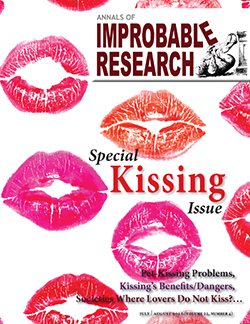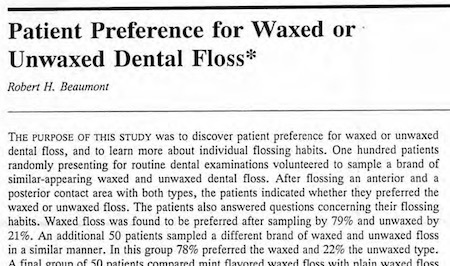Marc Abrahams's Blog, page 257
August 8, 2016
Finance Folklore and Fantasy
 If you’re interested in the role that folklore might have to play in the world of high finance and banking, may we recommend an article in the journal Folklore, Volume 124, Issue 3, 2013? Where author Robert McDowall, who holds a Law degree (LLB Hons) from University College London, and is based in the UK tax haven offshore financial centre of Guernsey, presents his paper entitled ‘The Folklore of Finance’.
If you’re interested in the role that folklore might have to play in the world of high finance and banking, may we recommend an article in the journal Folklore, Volume 124, Issue 3, 2013? Where author Robert McDowall, who holds a Law degree (LLB Hons) from University College London, and is based in the UK tax haven offshore financial centre of Guernsey, presents his paper entitled ‘The Folklore of Finance’.
“Those who do not work within the contracting world of financial services perceive that most transactions are based on other transactions, a sort of pyramid of transactions that occur in an artificial world, a fantasy world.”
Non-subscribers to the journal can purchase the paper for £26 (plus taxes, if applicable). Or, if you prefer you can read a different paper entitled ‘The Folklore of Finance’ from the Feb 24th edition of the New Times Melbourne, 1939, at no charge.
“The effect of the peculiar folklore of 1938 was to encourage the type of organisation known as banking and discourage profoundly the types known as industry and government. It also discouraged the individual citizen who, incorrigibly materialistic, clamoured for a roof over his head, clothes on his back, and food in his stomach. Under the protection of this hypnotic folklore the profits of American banking were remarkable, and in remarkable contrast to the losses of industry, the deficits of government, and the impecunious condition of the citizens.”
Other possible further readings include:
• Eastern Economic Journal, Vol. 31, No. 3, Winter 2005, AGGREGATE PRODUCTION FUNCTIONS – A PERVASIVE, BUT UNPERSUASIVE, FAIRYTALE by Franklin M. Fisher, Jane Berkowitz Carlton and Dennis William Carlton Professor of Microeconomics Emeritus Massachusetts Institute of Technology.
• For the Davos bears, America’s ‘Goldilocks’ recovery is a fairytale by William Keegan, The Observer, Sunday 4 February 2007
• FAILURE OF CAPITALISM? THE FAIRY TALE KNOWN AS NEW DEAL Review of Economic Studies & Research, Virgil Madgearu; Jun2013, Vol. 6 Issue 1, p187

August 7, 2016
Scrotal Asymmetry in Man and in Ancient Sculpture, etc.
 The 2002 Ig Nobel Prize for medicine was awarded to Chris McManus of University College London, for his excruciatingly balanced report, “Scrotal Asymmetry in Man and in Ancient Sculpture.” [That report was published in the journal Nature, vol. 259, February 5, 1976, p. 426; it was in fact the cover story of that issue.]
The 2002 Ig Nobel Prize for medicine was awarded to Chris McManus of University College London, for his excruciatingly balanced report, “Scrotal Asymmetry in Man and in Ancient Sculpture.” [That report was published in the journal Nature, vol. 259, February 5, 1976, p. 426; it was in fact the cover story of that issue.]
But some people care more about penis size than testicle asymmetry. For those people, Sara Rense writes about their favorite subject, in a report in Esquire, with the headline “The Real Reason Why Greek Statues Have Such Small Penises.”
BONUS: Here’s video of Chris McManus discussing a rather non-scrotal topic: editing

Bacteria Exchanged Via Osculation
 What bacteria are exchanged when two people kiss?
What bacteria are exchanged when two people kiss?
That question is addressed in studies that are profiled in the special kissing issue of the Annals of Improbable Research.
One of those studies was honored with an Ig Nobel Prize last year.

Tamagotchi, time-wasting, Pokémon Go, and the economy
 Tamagotchi, whose inventors were awarded the Ig Nobel Prize for economics in 1997, is celebrated by Jaime Rubio Hancock, writing in El Pais:
Tamagotchi, whose inventors were awarded the Ig Nobel Prize for economics in 1997, is celebrated by Jaime Rubio Hancock, writing in El Pais:
Does not anyone remember the Tamagotchi? 6 sets which we found as harmful as Pokémon Go
…This Japanese toy Bandai hooked millions of children in 1996. It was not more than a small oval device with a screen in black and white and three measly buttons to scroll through the menu. That was enough to care for a virtual pet.Since then they have sold more than 79 million units , not far below the 100 million downloads of Pokémon Go . And that was not free Tamagotchi: 2,500 pesetas (about 15 euros)….
After this earthquake and as a perfect conclusion, the creators of the Tamagotchi won an Ig Nobel prize (the parody of the Nobel) in 1997, “for their contribution to the economy through the waste of millions of hours of work”. There is no more noble cause, and I say this without any irony.

August 6, 2016
Are There Societies Where Lovers Do Not Kiss?
 Are There Societies Where Lovers Do Not Kiss? Is any society devoid of osculation?
Are There Societies Where Lovers Do Not Kiss? Is any society devoid of osculation?
Those questions are addressed in a study that’s profiled in the special kissing issue of the Annals of Improbable Research.

August 5, 2016
Prof. Lentle on food and digestion
 Roger Lentle is a professor at the Massey Institute of Food Science and Technology New Zealand. Here is an example publication from professor Lentle (along with co-author C. de Loubens) ‘A review of mixing and propulsion of chyme in the small intestine: fresh insights from new methods’ in: Journal of Comparative Physiology B, May 2015, Volume 185, Issue 4, pp 369-387.
Roger Lentle is a professor at the Massey Institute of Food Science and Technology New Zealand. Here is an example publication from professor Lentle (along with co-author C. de Loubens) ‘A review of mixing and propulsion of chyme in the small intestine: fresh insights from new methods’ in: Journal of Comparative Physiology B, May 2015, Volume 185, Issue 4, pp 369-387.

August 4, 2016
Round numbers, sharp numbers, and their perceived credibility
 If someone told you that a soap was “99.44% pure” would you be more likely to believe their claim than if they rounded the number to “99% pure”? A 2006 paper in the journal Advances in Consumer Research authored by professors Robert M. Schindler (Rutgers University-Camden) and Richard F. Yalch (University of Washington) entitled: ‘It Seems Factual, But Is It? Effects of Using Sharp versus Round Numbers in Advertising Claims’ examined the question of :
If someone told you that a soap was “99.44% pure” would you be more likely to believe their claim than if they rounded the number to “99% pure”? A 2006 paper in the journal Advances in Consumer Research authored by professors Robert M. Schindler (Rutgers University-Camden) and Richard F. Yalch (University of Washington) entitled: ‘It Seems Factual, But Is It? Effects of Using Sharp versus Round Numbers in Advertising Claims’ examined the question of :
“[…] whether consumers make the false assumption that claims using sharp numbers are less likely to be estimates (i.e., are more factual) than those using round numbers and, if so, whether this makes sharp-number claims more believable.“
And the answer was, in the authors’ opinion, broadly, yes.
“The present research shows that even in the absence of a clear reference to an empirical basis for the numerical claim, consumers are likely to assume that it is based on research when the claim is stated in terms of a sharp number rather than a round one.”
Also see : An extension to round/sharp number perception theory in a new paper for the Journal of Consumer Research
“Drawing on recent findings in the numerical cognition literature, this work proposes that individuals project gendered meanings to precise versus round numbers, with precise numbers seen as more masculine relative to round ones.”

August 3, 2016
Indirect Business Effect of Ominous Music on Sharks
One of the first research projects to look at the possible indirect business effect of ominous music on sharks finds that there may be a there there.
 The study is “The Effect of Background Music in Shark Documentaries on Viewers’ Perceptions of Sharks,” Andrew P. Nosal, Elizabeth A. Keenan, Philip A. Hastings, and Ayelet Gneezy [pictured here], newly published in PLoS ONE (11(8), 2016, e0159279). The authors, two biologists and two business professors, are at the University of California San Diego, and Harvard Business School. They write:
The study is “The Effect of Background Music in Shark Documentaries on Viewers’ Perceptions of Sharks,” Andrew P. Nosal, Elizabeth A. Keenan, Philip A. Hastings, and Ayelet Gneezy [pictured here], newly published in PLoS ONE (11(8), 2016, e0159279). The authors, two biologists and two business professors, are at the University of California San Diego, and Harvard Business School. They write:
“In this study, we investigate… the ominous background music that often accompanies shark footage in documentaries. Using three experiments, we show that participants rated sharks more negatively and less positively after viewing a 60-second video clip of swimming sharks set to ominous background music, compared to participants who watched the same video clip set to uplifting background music, or silence. This finding was not an artifact of soundtrack alone because attitudes toward sharks did not differ among participants assigned to audio-only control treatments. This is the first study to demonstrate empirically that the connotative attributes of background music accompanying shark footage affect viewers’ attitudes toward sharks.”
Carmen Nobel discusses the business aspects of this, writing for Harvard Business Review: “Ominous Background Music is Bad for Sharks“.
This video shows a somewhat contrasting situation, non-ominous music accompanying animation of sharks:
Here’s an ominous-music-laden shark video:
And here’s a video of sharks and jets, with music that both is and is not ominous:

The Ig Nobel Prize that honored dental floss research
The 1995 Ig Nobel Prize for dentistry was awarded to Robert H. Beaumont, of Shoreview, Minnesota, for his incisive study “Patient Preference for Waxed or Unwaxed Dental Floss.” The study appeared in the Journal of Periodontology, vol. 61, no. 2, Feb. 1990, pp. 123-5. The study says:
“The purpose of this study was to discover patient preference for waxed or unwaxed dental floss, and to learn more about individual flossing habits. One hundred patients randomly presenting for routine dental examinations volunteered to sample a brand of similar-appearing waxed and unwaxed dental floss. After flossing an anterior and a posterior contact area with both types, the patients indicated whether they preferred the waxed or unwaxed floss. The patients also answered questions concerning their flossing habits. Waxed floss was found to be preferred after sampling by 79% and unwaxed by 21%. An additional 50 patients sampled a different brand of waxed and unwaxed floss in a similar manner. In this group 78% preferred the waxed and 22% the unwaxed type. A final group of 50 patients compared mint flavored waxed floss with plain waxed floss of the same brand. In this group 56% preferred the mint flavored waxed floss, 24% the plain waxed floss, and 20% had no preference. A combined total of only 29.5% of the patients claimed to floss daily, 53.5% floss irregularly but at least once a week, while 17% do not floss even once a week. Waxed floss was purchased for home use by a combined patient total of 57.5%, unwaxed by 32%, and neither type by 10.5%. An unsubstantiated belief in the superiority of unwaxed floss has persisted to the present time. Since both waxed and unwaxed floss have now been shown to be of similar clinical effectiveness, it may be prudent for dental professionals to recommend the often preferred and purchased waxed floss for more patients than unwaxed after evaluating individual needs and preferences.”
This was the first and, thus far, only time an Ig Nobel Prize has been awarded in the category of dentistry.
Here’s a video in which a deep-voiced announcer announces how an unnamed copywriter wrote that people should floss their own teeth:
BONUS (August 2, 2016): The Associated Press reports: “Medical benefits of dental floss unproven“

Garlic — A Sensory Pleasure or a Social Nuisance? [podcast 75]
Whether garlic is a sensory delight or a social horror is the big question in this week’s Improbable Research podcast.
SUBSCRIBE on Play.it, iTunes, or Spotify to get a new episode every week, free.
This week, Marc Abrahams — with dramatic readings by Yale/MIT/Harvard biomedical researcher Chris Cotsapas — tells about:
Garlic —A Sensory Pleasure or a Social Nuisance?— “Garlic: A Sensory Pleasure or a Social Nuisance?” Susanna Rosin, Hely Tuorila, and Antti Uutela, Appetite, vol. 19, no. 2, October 1992, pp. 133-43.
Garlic, garlic, garlic.

One woman’s personal video testimony about why she eats raw garlic:
The mysterious John Schedler or the shadowy Bruce Petschek perhaps did the sound engineering this week.
The Improbable Research podcast is all about research that makes people LAUGH, then THINK — real research, about anything and everything, from everywhere —research that may be good or bad, important or trivial, valuable or worthless. CBS distributes it, on the CBS Play.it web site, and on iTunes and Spotify).

Marc Abrahams's Blog
- Marc Abrahams's profile
- 14 followers




